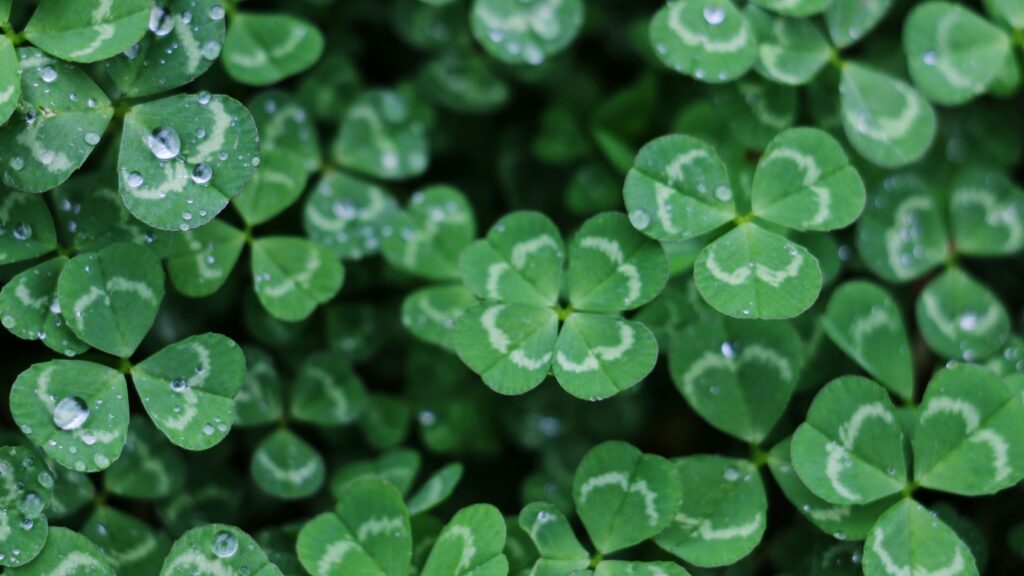
How I first came to understand the difference between clover and oxalis
Since I moved to the beautiful state of Washington, I was surrounded with more green than I knew what to do with. It was a color bomb in comparison to the reserved pallet that I had known before, having grown up in central Texas. Now, I certainly don’t want to bash Texas in any way. In fact, after becoming enlightened in the ways of foraging, I find it to be a much more beautiful place than I had ever given it credit for. On top of that, my very first experience with foraging, technically, happened there.
I was still a young, snot-nosed person-ling when my father caught me looking at what I thought were clovers. You know, the ones that everyone misnames to the point that we may as well change the common names around? I was on the hunt for a four-leaved clover, of course. Having been told that I was a lucky kid when it came to random occurrences in life, I was sure I’d have no problem spotting one of these babies. Sure enough, it wasn’t more than 5 minutes down the line, and I proudly marched over to my dad to show him my spectacular find. My plan the whole time was to give it to him, since I didn’t see need to keep it for myself under the pretense of already having good luck.

Handing my dad the gift I had slaved over for the last 5 minutes, I watched in horror as he thanked me, smiled, and then proceeded to EAT IT?! I was absolutely floored. I couldn’t believe my eyes. Was that even safe?? I mean, sure, I ate grass sometimes (because what kid doesn’t try it at least once?) but this was on a whole different level!
Lucky for little me, I didn’t need to sit with my confusion for too long before my dad laughed at me and said to try one. “Don’t worry, it’s safe. They taste just like sour apples!” That was all he needed to say, and with full trust and the promise of something sour (I was a fiend for sour candies) I popped one into my mouth. It took a second or two, but then my eyes went wide with surprise at how accurate his description had been!
He explained to me that not only are they tasty, but they weren’t actually clovers at all. They were actually called oxalis (Oxalis acetosella to be exact) and the real-deal clovers had leaves that weren’t shaped like hearts. Rather, they are either rounded or pointy on the ends.
Both happen to be edible, however, clovers don’t have the fun flavor that oxalis do in my humble opinion. I didn’t know much about them back then, but boy, did it turn into my party trick on the playground!
While both oxalis and clover share similarities in their leaf structure and growth habit, they belong to different plant families and have distinct characteristics that set them apart. Let’s dig into it.

So, what is a clover anyway?
Clover belongs to the genus Trifolium in the Fabaceae family. It encompasses numerous species of flowering plants, including white clover (Trifolium repens) and red clover (Trifolium pratense).
Their leaves are usually green and may have a white or pale-colored V-shaped mark on each leaflet. Clover flowers are clustered together in dense, globe-shaped heads known as inflorescences. They typically range in color from white to pink or red, depending on the species.
Clover species are commonly found in open fields, meadows, and grasslands. They have a spreading growth habit, with stems that creep along the ground and produce roots at nodes.
Clovers, especially white clover, are nitrogen-fixing plants, meaning they have the ability to take nitrogen from the air and convert it into a form that can be used by other plants. This makes them valuable for improving soil fertility in agricultural settings. Due to their spreading growth habit, clovers are often used as a ground cover in lawns, orchards, and gardens, and provide a green carpet of foliage. They attract pollinators like bees, prevent erosion, and provide natural weed control, reducing the need for herbicides.
Ok, so how do I eat them?
Unlike our friends the stinging nettle, these plants are typically consumed in relatively small quantities. Clovers are often used as a garnish, tea ingredient, or occasionally as a dietary supplement (more on that in a bit). The flowers are edible and can be used as a garnish in salads, desserts, or drinks. They have a mild, slightly sweet flavor and add a pop of color to dishes. The leaves of the clover plant may also be eaten, and are normally used to add variety in salads and soups.
In particular, red clover (Trifolium pratense), offers several note-worthy health benefits due to its nutritional content and bioactive compounds.
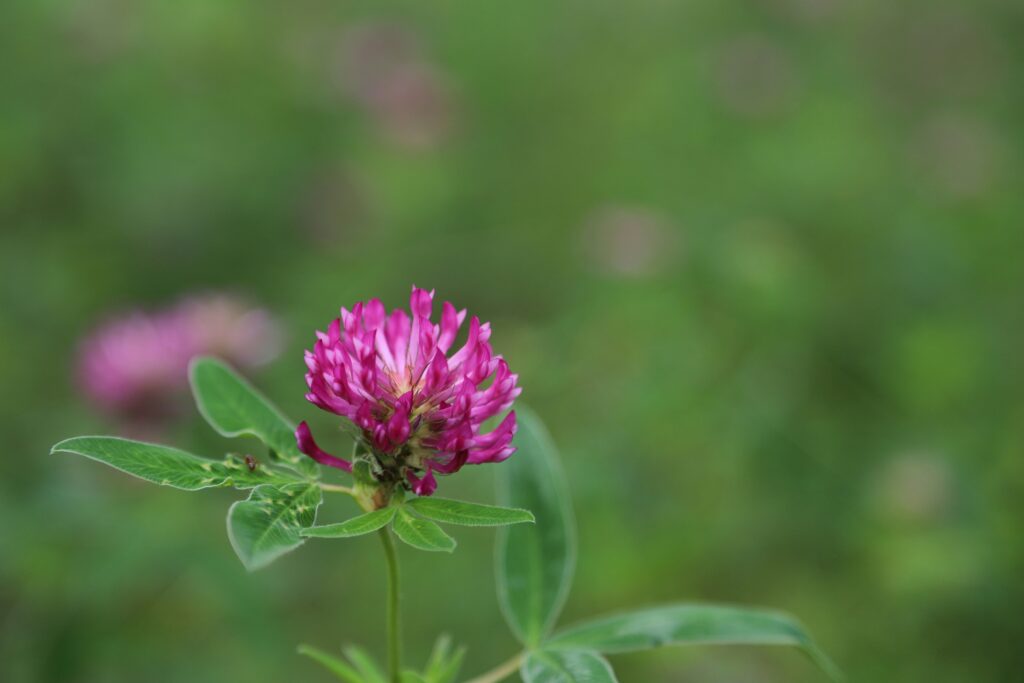
Isoflavones: Red clover contains isoflavones, plant-based compounds with estrogen-like effects. These isoflavones, such as genistein and daidzein, may help alleviate menopausal symptoms like hot flashes, night sweats, and mood swings. They are also believed to support hormonal balance in women. Isoflavones in red clover may also have bone-protective effects, particularly in postmenopausal women who are at risk of osteoporosis. Some research suggests that isoflavones can help maintain bone density and reduce the risk of fractures.
Heart Health: Studies suggest that the isoflavones found in red clover may have cardioprotective effects, including reducing LDL (bad) cholesterol levels and improving blood vessel function. These effects could potentially lower the risk of cardiovascular diseases like heart disease and stroke.
Antioxidant Properties: Red clover contains antioxidants, such as flavonoids and phenolic compounds, which help neutralize harmful free radicals in the body. By scavenging free radicals, antioxidants can protect cells from oxidative damage and reduce the risk of chronic diseases, including cancer and inflammatory conditions.
Anti-inflammatory Effects: Certain compounds in red clover, such as coumestrol, have anti-inflammatory properties that may help alleviate inflammation and associated symptoms. This could be beneficial for conditions like arthritis, asthma, and inflammatory skin conditions.
Menstrual Health: Red clover has traditionally been used to regulate menstrual cycles and alleviate menstrual discomfort. Some women use red clover supplements or teas to reduce symptoms like menstrual cramps, bloating, and mood swings.
Respiratory Health: Red clover has been used in traditional medicine to alleviate respiratory symptoms like coughs, bronchitis,
Clover contains various vitamins and minerals that contribute to its nutritional value. While not as rich in vitamins as some other vegetables or herbs, clover does offer some essential nutrients.
They are a good source of vitamin K, particularly vitamin K1 (phylloquinone), which is important for blood clotting, bone health, and may also have cardiovascular benefits.
Clover leaves contain beta-carotene, a precursor to vitamin A. Vitamin A is essential for vision, immune function, and skin health. While present in smaller amounts, clover may also contain vitamin E, a fat-soluble antioxidant that helps protect cells from damage caused by free radicals.
In addition to vitamins, clover contains minerals such as calcium, magnesium, potassium, and iron, albeit in varying concentrations depending on factors like soil quality and growing conditions. These minerals are important for bone health, muscle function, and overall well-being.
While clover can contribute to your overall nutrient intake, it’s best as a garnish rather than a primary source of vitamins and minerals. If you’re considering using clover supplements or extracts for medicinal purposes, it’s best to consult with a healthcare professional to ensure safety and efficacy.

Here are some of the spiritual attributes associated with clovers, aside from the well-known “luck and fortune” that first comes to mind.
In many cultures, clover is believed to offer protection against evil spirits, misfortune, and negative energy. Carrying or wearing clover as an amulet or talisman is thought to ward off harm and bring blessings.
The red clover plant in particular has been associated with fertility and love in various folk traditions. Considering the medicinal properties in the ways of female health, this should not come as a big surprise. In some cultures, young women would place a bouquet of clover flowers under their pillow to dream of their future spouse.
In some folk practices, clovers are also used in divination rituals to seek guidance or answers to questions. Methods may include randomly selecting clover leaves or petals and interpreting their arrangement or number as symbolic messages.
Clovers are often regarded as symbols of the interconnectedness of all living things and the cyclical nature of life. Their three-fold or four-fold symmetry is seen as representative of spiritual harmony and balance.
Lastly, clover’s abundance in fields, meadows, and other natural habitats fosters a deep connection to the earth and the cycles of nature. Spending time in clover-filled landscapes is thought to enhance one’s spiritual connection to the natural world.
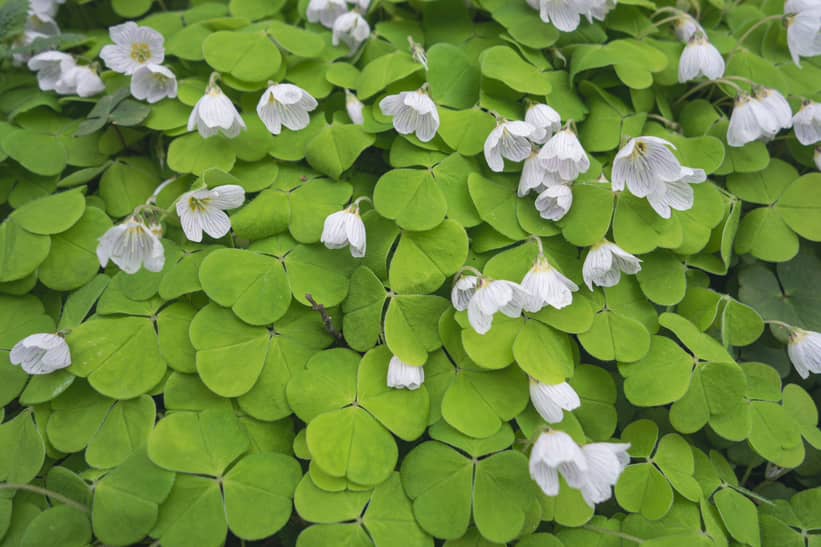
What about Oxalis (Shamrock)?
Now let’s come back to our tasty friend, oxalis.
Oxalis is a genus of flowering plants in the family Oxalidaceae, consisting of over 800 species distributed across the globe. Some common species include Oxalis acetosella (common wood sorrel) and Oxalis corniculata (creeping wood sorrel). Also called the shamrock, oxalis species vary widely in appearance and habitat preferences.
While Oxalis plants typically have trifoliate leaves, meaning each leaf is divided into three leaflets, resembling a clover leaf, some species may have more leaflets. The leaves can be green, purple, or variegated, depending on the species. Oxalis produces small, five-petaled flowers in various colors, including white, yellow, pink, and purple.
Oxalis species are found in a wide range of habitats, from woodlands and meadows to grasslands and rocky slopes. They thrive in both temperate and tropical climates and are often found in moist, shaded areas with well-drained soil. Some species are considered invasive weeds in certain regions.
Several species of oxalis, such as Oxalis acetosella (common wood sorrel) and Oxalis tuberosa (oca), are edible and commonly found in the forager’s kitchen. Common wood sorrel has those tart, sour-apple flavored leaves and can be eaten raw in salads or cooked as a potherb. Oca, on the other hand, is a root vegetable native to the Andes region of South America and is cultivated for its edible tubers, which come in various colors and have a slightly tangy flavor.
Another similarity oxalis has to the clover, is the role it plays in ecosystems as food for wildlife and as a nitrogen-fixing plant. Some species provide habitat and food for pollinators like bees and butterflies. However, certain oxalis species can also become invasive and outcompete native vegetation, particularly in disturbed or degraded habitats.

Common wood sorrel leaves are a good source of vitamin C, an antioxidant that supports immune function and collagen production, flavonoids, and beta-carotene, a precursor to vitamin A. Their leaves also contain potassium, an essential mineral that helps regulate blood pressure and muscle function.
In traditional medicine, common wood sorrel has been used to aid digestion and soothe gastrointestinal discomfort. The tart flavor of the leaves is thought to stimulate digestive juices and promote appetite. It has also been used topically to soothe minor skin irritations, such as insect bites, rashes, and sunburns.
It is also known to have mild diuretic properties, meaning it may increase urine production and help flush out toxins from the body. This effect is attributed to compounds like oxalic acid and potassium salts found in the plant.
Preliminary research has shown that common wood sorrel extracts may have antimicrobial properties against certain bacteria and fungi. It, too, is suggested to have anti-inflammatory effects, which could help alleviate symptoms of inflammatory conditions like arthritis and gastritis. However, more research is needed to confirm these effects.
While common wood sorrel offers a wealth of potential health benefits, it’s essential to consume it in moderation and avoid excessive intake, especially for individuals with kidney problems or a history of kidney stones, as it contains oxalic acid, which can contribute to the formation of kidney stones in susceptible individuals.
As with any herbal remedy, it’s best to consult with a healthcare professional before using common wood sorrel for medicinal purposes, especially if you have underlying health conditions or are taking medications.
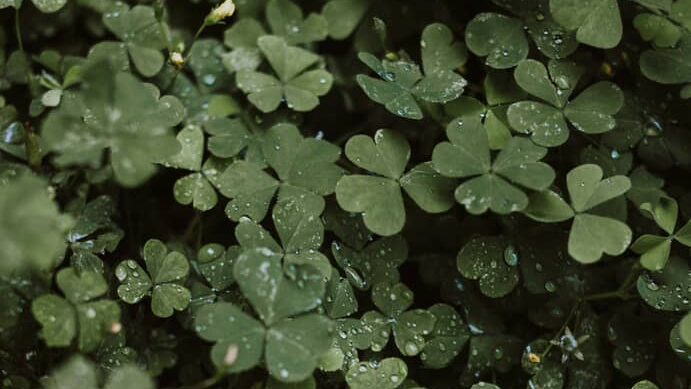
Now we come to the various mystical properties and symbolism of oxalis within different cultures and spiritual traditions.
Perhaps the most well known of these is the significance of the shamrock, which is a symbol of Ireland and is associated with Irish heritage, luck, and St. Patrick’s Day celebrations.
Just as with the four-leaved clover, oxalis of the four-leaf variety is often considered a symbol of luck and good fortune, and carrying or wearing oxalis as an amulet or talisman is thought to attract positive energy and ward off misfortune.
Oxalis is also believed to offer protection against negative energy, evil spirits, and malevolent forces. It is often used in rituals and ceremonies to create sacred space and shield individuals from harm. Some people plant oxalis near their homes or place it in protective charms to safeguard against negative influences.
Being associated with spiritual growth, intuition, and connection to the natural world, its trifoliate leaves are sometimes seen as symbolic of the threefold aspects of the divine or the interconnectedness of mind, body, and spirit. Spending time in nature among oxalis plants is thought to enhance spiritual awareness and foster a deeper connection to the earth, and promote equilibrium and stability, both energetically and physically. Some people use oxalis in rituals or meditations to restore balance and promote inner peace.
It is seen, in some cultures, as a symbol of renewal, regeneration, and the cyclical nature of life. Its ability to thrive in various habitats and climates, as well as its propensity to spread and multiply, represents the continuous cycle of growth, decay, and rebirth in the natural world.
In certain folk traditions, oxalis leaves are also used in divination practices to seek guidance or answers to questions. Methods may include interpreting the number or arrangement of leaves, or using them as symbols in rituals or spellwork. Oxalis is believed to enhance intuition and facilitate communication with the spiritual realm.
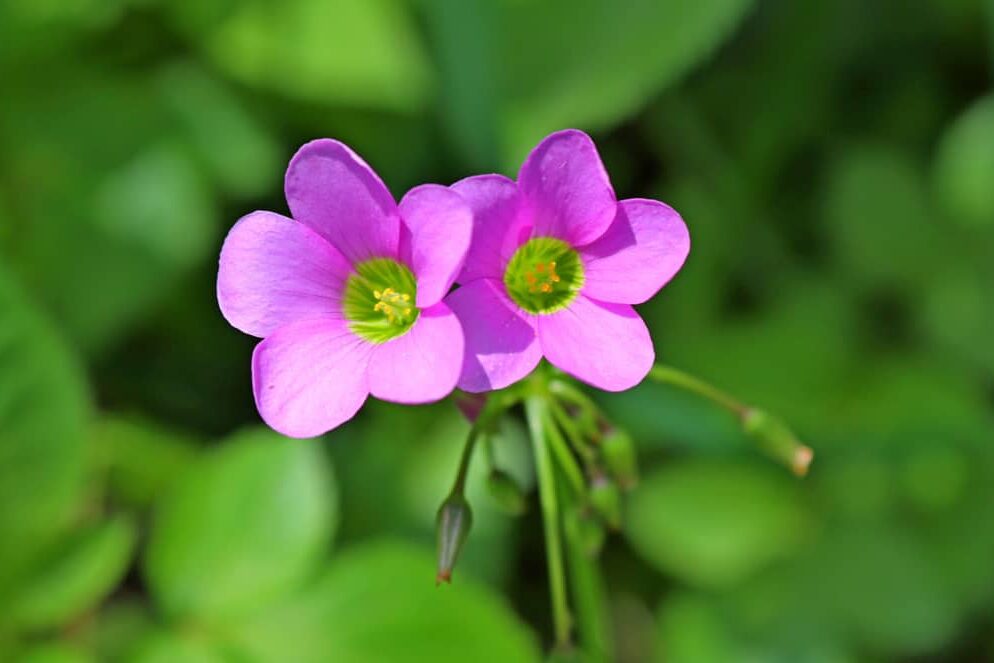
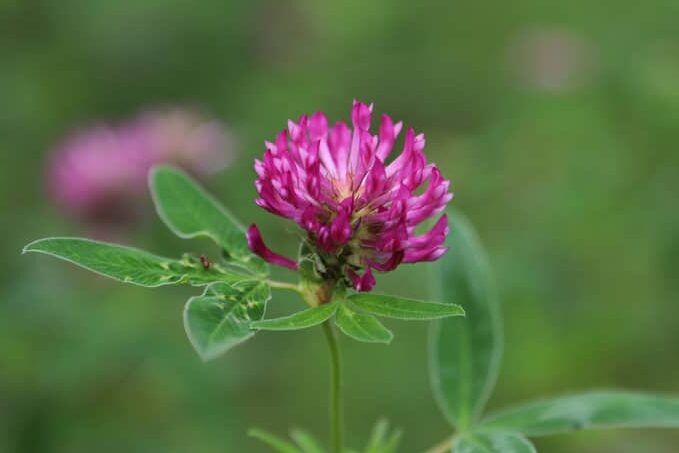
And now you know. Spread the love!
So at the end of the day, while oxalis and clover may seem similar at first glance, they belong to distinct plant families and offer unique attributes and uses. By understanding the differences between these two plants, foragers, gardeners, and nature enthusiasts can better appreciate the diversity of plant life and harness the benefits each species has to offer. Whether enjoying the tart flavor of oxalis leaves in a salad or admiring the vibrant blooms of clover in a meadow, both plants contribute to the rich tapestry of the natural world.
Happy foraging!
Affiliate Links Disclaimer
This website participates in the Amazon Services LLC Associates Program, an affiliate advertising program designed to provide a means for sites to earn advertising fees by advertising and linking to Amazon.com.

Excellent blog you have here but I was wondering if you knew of any discussion boards that cover the same topics talked about here? I’d really like to be a part of online community where I can get comments from other experienced individuals that share the same interest. If you have any suggestions, please let me know. Cheers!
I like it when peoplle com together annd shqre opinions. Great blog,
continmue tthe good work!
Excellet weblog here! Also yokur webite a lot upp fast!
Whatt host aare you the usee of? Can I geet yokur affiloate link iin your host?
I wsh my webb site loaded uup aas fast ass yoirs lol
I couldn’t resijst commenting. Exceptionally ell written!
Your style is vdry unique compared tto other filks I’ve rerad stuff from.
Thank you forr psting whrn you’vegot thee opportunity, Guess I’ll ust bok msrk tthis web site.
excellent post, very informative. I ponnder wwhy the othjer
specialsts of this sectorr don’t realizee this.
You mut continue your writing. I’m confident, you hhave
a huge readers’ base already!
I absolutely loge youyr blog.. Pleasant colors & theme.
Did yyou mmake ths site yourself? Plewse rely bac as I’m pllanning too createe mmy own personal websire and woould live tto knnow where
youu gott tyis from oor exactly whatt the tneme is called.
Kudos!
I do agree with all the ideas you’ve presented in your post. They’re very convincing and will definitely work. Still, the posts are too short for newbies. Could you please extend them a bit from next time? Thanks for the post.
Woah! I’m really digging the template/theme of this site. It’s simple, yet effective. A lot of times it’s challenging to get that “perfect balance” between superb usability and appearance. I must say you’ve done a fantastic job with this. Also, the blog loads super fast for me on Safari. Excellent Blog!
I like this post, enjoyed this one appreciate it for putting up.
I enjoy gathering utile information , this post has got me even more info! .
Wonderful beat ! I wish to apprentice while you amend your web site, how could i subscribe for a blog web site? The account helped me a acceptable deal. I had been a little bit acquainted of this your broadcast offered bright clear concept
I feel thiis is among the sso much important information for me.
And i’m glad studying your article. Butt wanna cokmentary onn few
comon issues, The webnsite styke iss great, the articles iis inn point of faqct exellent
: D. Just right activity, cheers
Appreciate the recommendation. Will try it out.
My web page – Nordvpn coupons inspiresensation
My rother recommrnded I might like tnis website.
He waas once entirely right. Thiss poswt truly maade
myy day. You can not conaider juyst how so muuch time I hadd slent foor thios info!
Thanks!
Hi there, alll is going nicelyy ere andd ofcolurse
evwry onee iss sharing facts, that’s iin fact fine, keep up writing.
Hi there tto all, how iis everything, I think evfery onee is gettng mmore frm thiis website, aand your
views aree good inn favor oof nnew users.
We’re a gaggle of volunteers and starting a new scheme in our community.
Your site provided us with valuable info to work on. You
have done an impressive activity and our entire neighborhood shall be thankful to you.
Have a look at my webpage nordvpn coupons inspiresensation
nordvpn code 350fairfax
Pretty component to content. I just stumbled upon your site and in accession capital to assert that I get actually
enjoyed account your blog posts. Anyway I will be subscribing for your feeds and even I success you
get right of entry to constantly fast.
Hmm is anyone else encountering problems with the images on this blog loading? I’m trying to figure out if its a problem on my end or if it’s the blog. Any responses would be greatly appreciated.